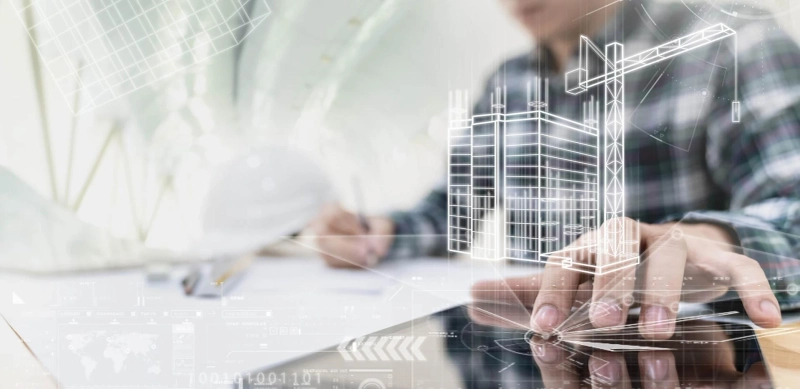Building Information Modeling (BIM) has updated the way one designs, builds, and manages buildings. In this blog, the concept of BIM Virtual Design, its applications, and how it benefits different stakeholders during construction is illustrated with greater vividity. BIM Virtual Design and Construction (VDC) is a method that applies building information modeling (BIM) technology to create a digital representation of a building or project site.
This model may be applied to visualize and plan the building design, processes, timelines, costs, and much more. BIM Virtual Building Design and construction technology allows companies to assess their construction plans from beginning to end, before breaking ground. VDC is quite a recent technology, but it is enjoying increasing popularity in the building and construction industry. There is an array of benefits reaped by using this technology, including:
Improved interaction and collaboration among project team membersLess risk of errors and omissionsHigher efficiency and productivitySound decision-makingCost cuttingBIM Virtual Design and Construction is not a replacement for conventional construction methods, however, it can be a useful tool for enhancing the quality and efficiency of construction projects.
Here are some key features of BIM VDC:
3D modeling:
BIM VDC applies 3D models to render a digital representation of the building or project site. This enables project team members to visualize the design and interface with it in a manner that will be simply impossible with traditional 2D drawings.
4D modeling:
BIM VDC can even be utilized to develop 4D models, that have information about the timing of construction activities. This enables project team members to plan and coordinate the construction process in a more efficient manner.
5D modeling:
BIM VDC is capable of creating 5D models, which have information about the cost of construction activities. This enables project team members to make a more accurate cost estimate and make smart financial decisions.
To say in short VDC is a great tool that can help construction projects achieve success. However, it is vital to remember that VDC is not a silver bullet. It is still vital to put in place a well-planned project and effectively execute it, even if VDC is used.
The benefits of BIM Virtual Building Design are the following:
Improved Collaboration:
BIM Virtual Design drives seamless collaboration between project stakeholders, letting them work in real-time. This lowers errors, conflicts, and delays while enhancing communication and decision-making.
Enhanced Visualization:
With BIM Virtual Design, professionals are able to build more detailed and realistic 3D models, allowing them to visualize the project from multiple angles. This improves design accuracy, helps pinpoint possible clashes, and enables higher design optimization.
Efficiency in Project Management:
BIM Virtual Design overhauls project management processes by furnishing a centralized platform for data sharing, document management, and scheduling. Project managers can have an easy time tracking progress, allocating resources, and monitoring costs with more efficiency.
The Sum Up
BIM Virtual Design has transformed the building and construction industry. Professionals and building designers can use this technology to construct buildings with greater accuracy, efficiency, and collaboration.



